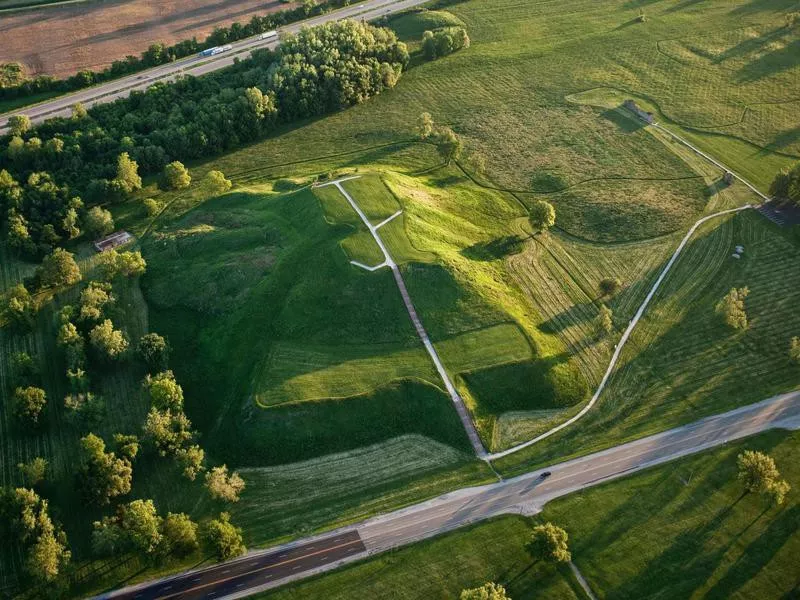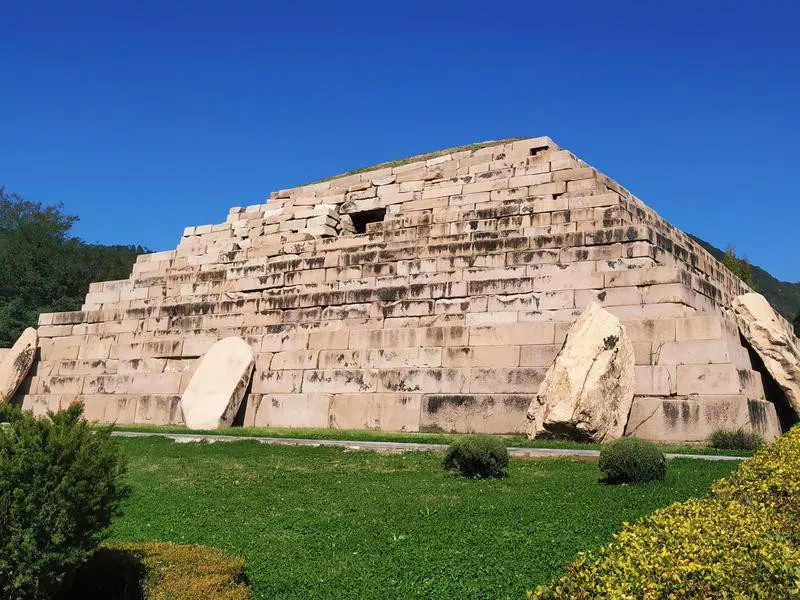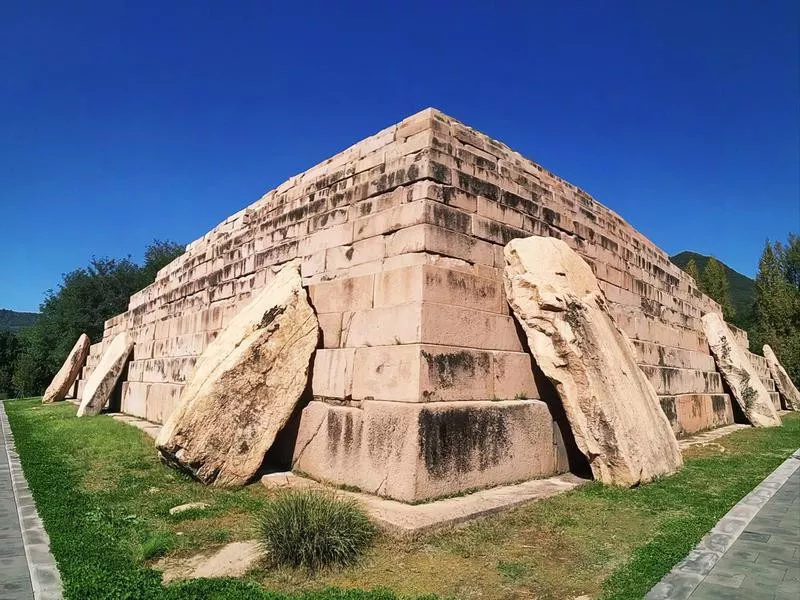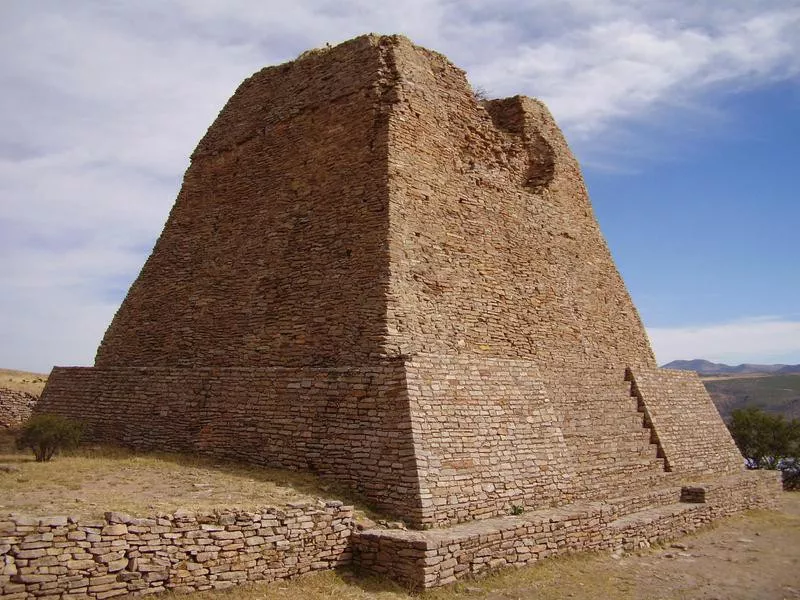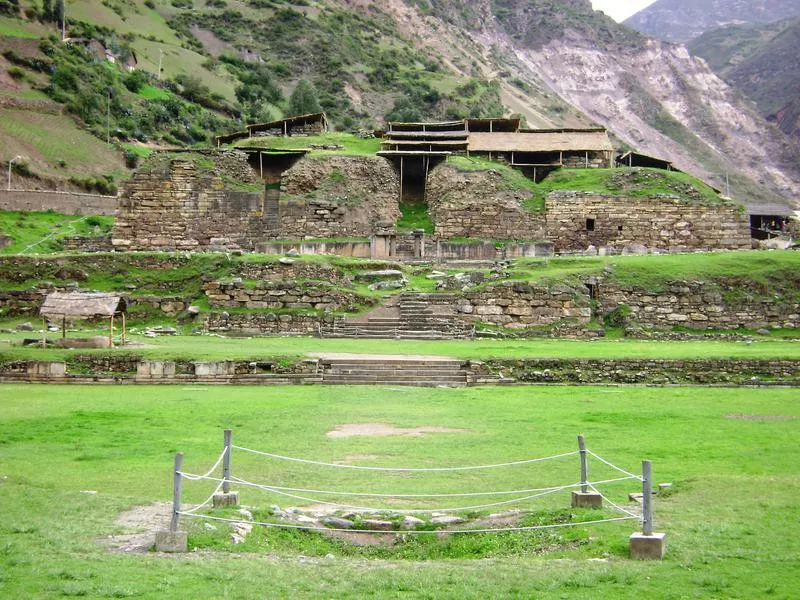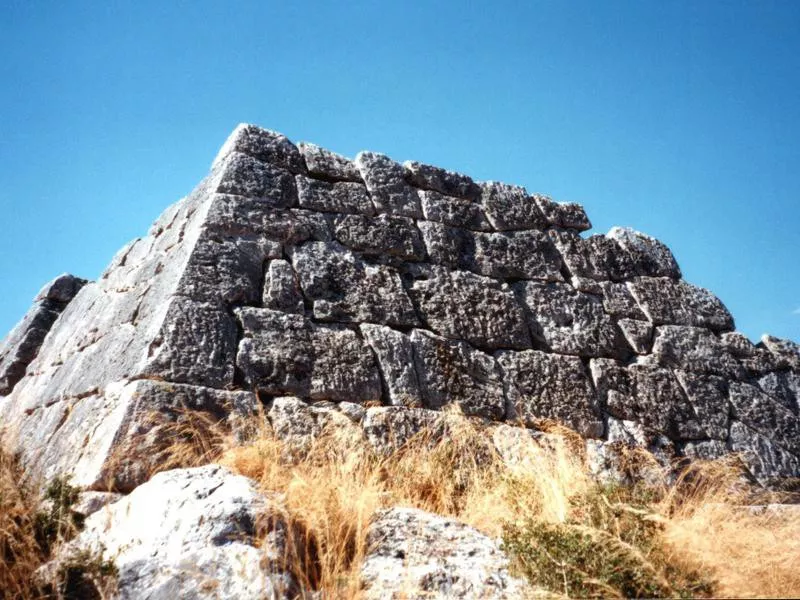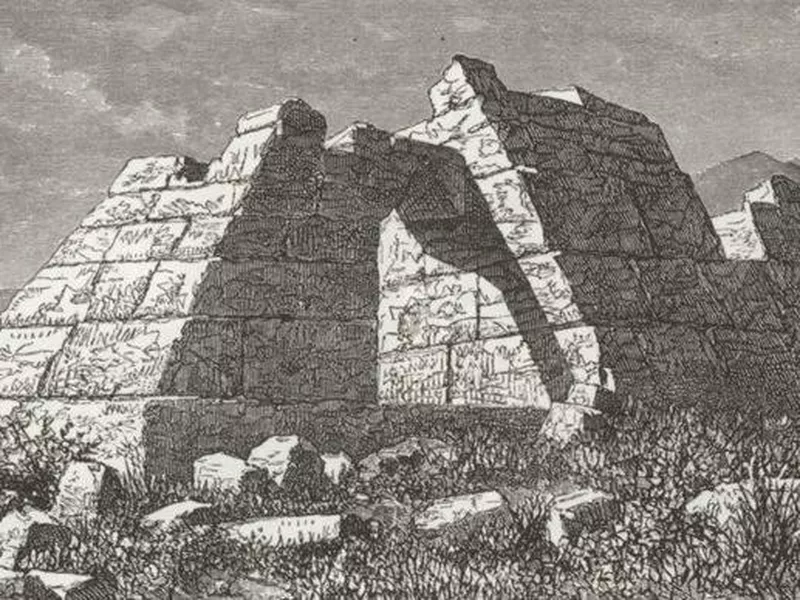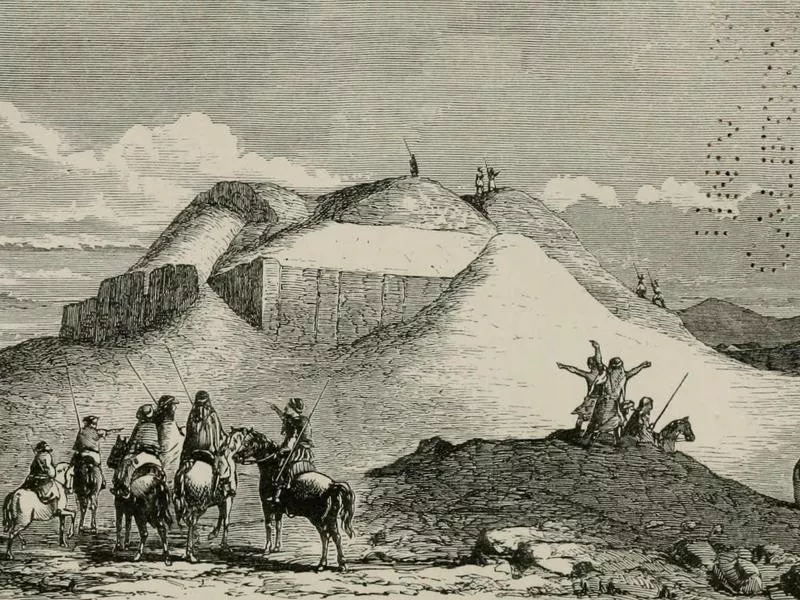The word “pyramid” conjures a lot of sharp imagery — no doubt of looming, conical structures that sit in the middle of the Egyptian desert or overlook the banks of the Nile. It’s true: Ancient Egypt made the pyramid concept famous. But the Egyptians were not the only civilization in the world to lay claim to pyramid fame.
In fact, pyramids can be found all over the world and all across the millenia. From China to South America, Mexico to Iraq and everywhere in between, ancient pyramids dot the continents across time.
There is no way to know how many pyramids there are on Earth, but certainly more than hundreds, as Egypt alone has more than 100 pyramids. And while the Pyramids at Giza are among the world's famous, other pyramids have additional superlative titles. Mexico, for example, has the largest pyramid in the world.
Take a step back in time and get to know some of the most famous ancient pyramids around the world, listed from “newest” to oldest. How many have you heard of?
25. Sukuh
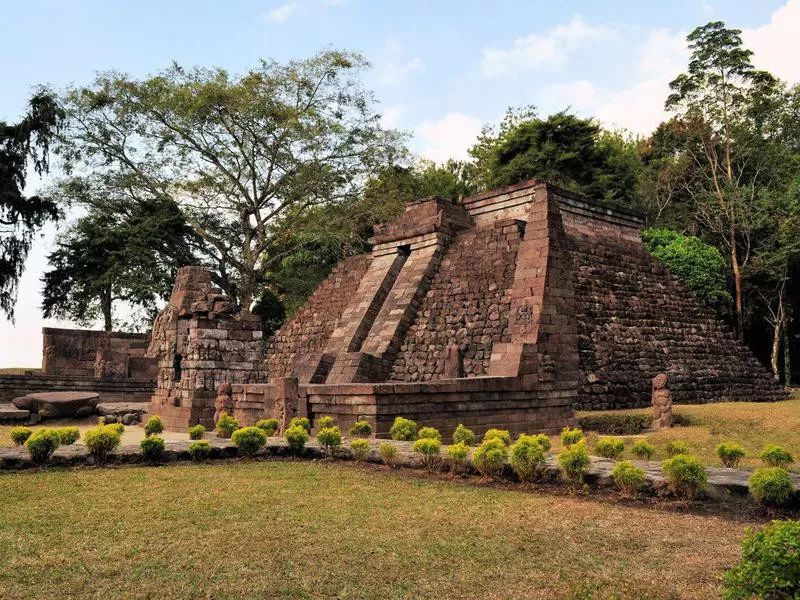
flocu / Getty Images
Location: Java, Indonesia
Dates back to: 1400 A.D.
What Makes This Pyramid Cool?
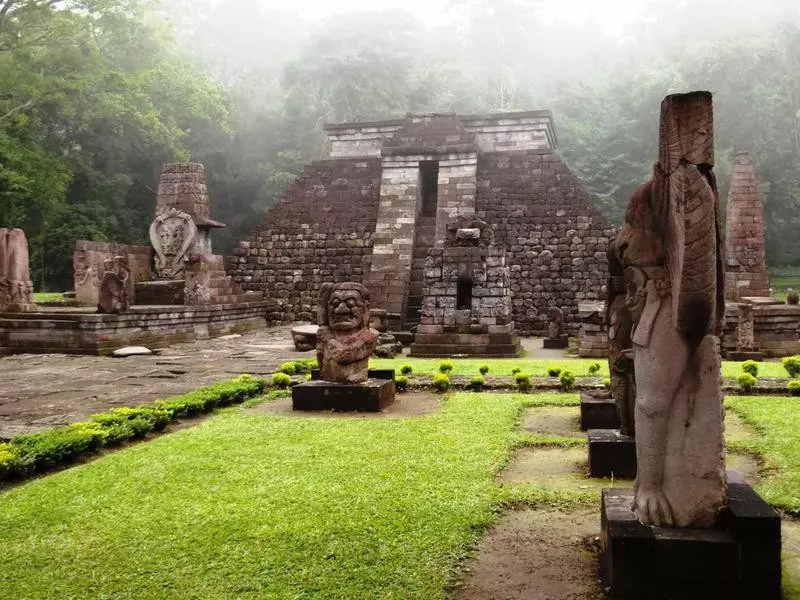
noegrr / Getty Images
Located in Berjo Village on the slopes of Mount Lawu, the Sukuh pyramid is unique for this part of the world, as it closely resembles the pyramids of the Mayan culture. The structure features three terraces, each connected with a sloping alley.
On the face of the temple are stone carvings that reflect the Hindu culture, and researchers have traced the meaning of these carvings to being erotic in nature. In fact, a phallic statue once stood on the grounds of this complex but now sits at the National Museum in Jakarta.
24. Monks Mound
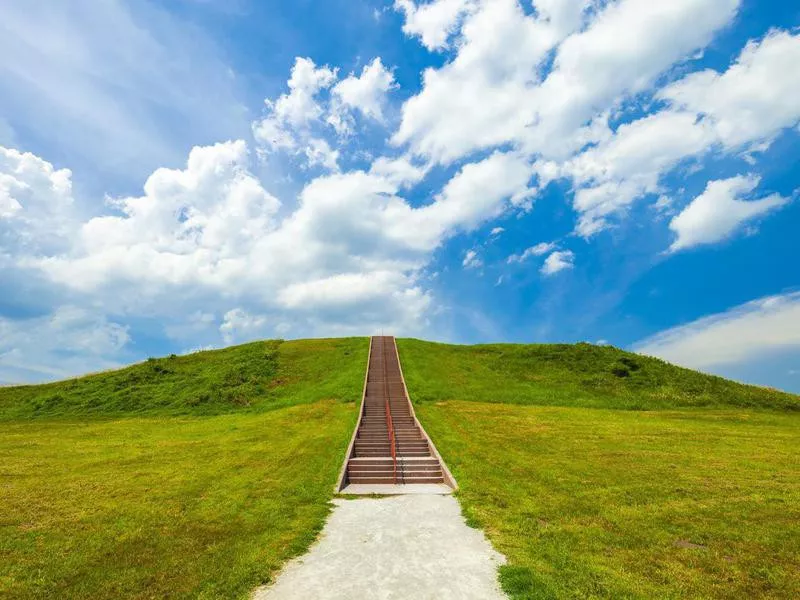
traveler1116 / Getty Images
Location: Collinsville, Illinois
Dates back to: 1100 A.D.
What Makes This Pyramid Cool?
When you think of ancient pyramids, you most definitely don’t think about the state of Illinois. And yet, you most definitely can find one there. Known as Monks Mound, the structure is the result of pre-Columbian Native Americans who constructed these pyramid-shaped areas known as mounds.
Monks Mound is by far the largest and even has a base that is larger than the Great Pyramid at Giza. There is no stone used to build these ponds. Instead, they are built by layering clay and dirt.
23. Brihadisvara Temple
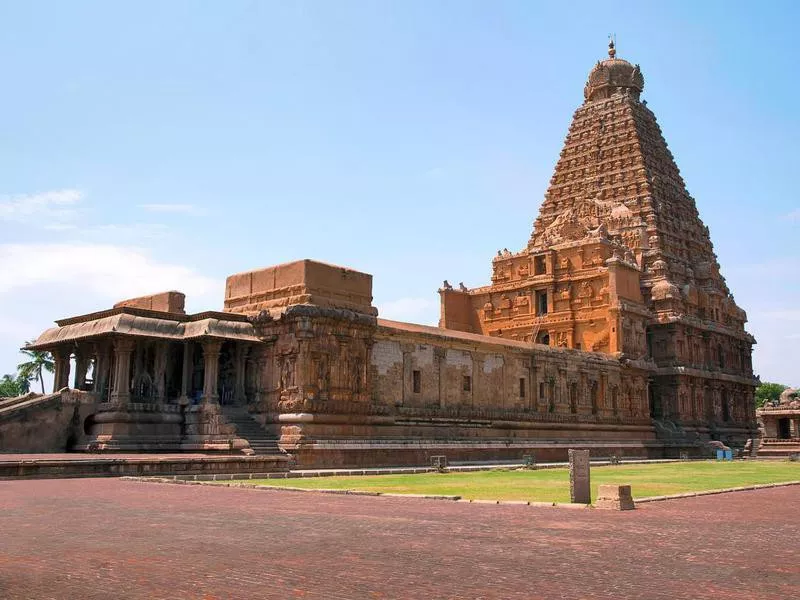
ePhotocorp / Getty Images
Location: Tamil Nadu, India
Dates back to: 1003 A.D.
What Makes This Pyramid Cool?
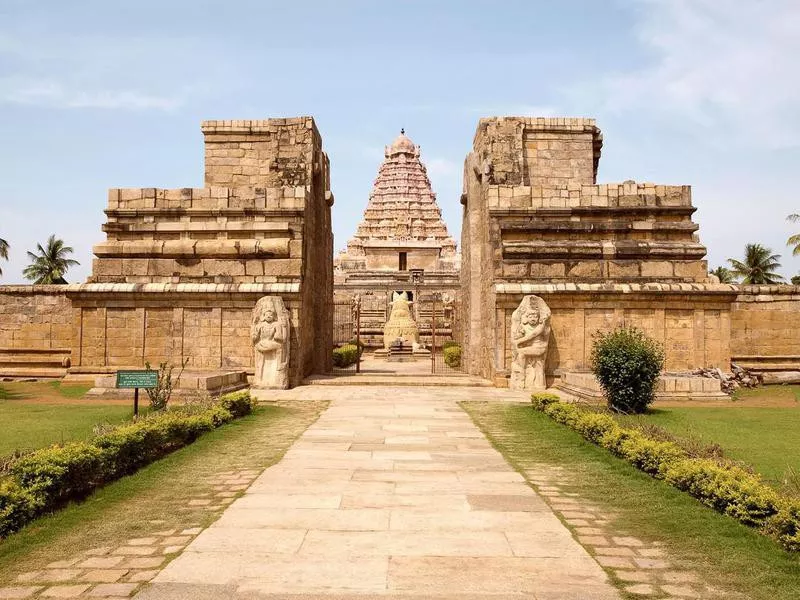
ePhotocorp / Getty Images
Dating back to the Chola Empire, during the reign of Rajaraja I, the Brihadisvara Temple is one of the many beautiful Hindu temples that date from this era. It was constructed to honor the deity Shiva and has gorgeous, ornate carvings that tell the story of Shiva's life.
The entire pyramid is built of granite, and the tower that rises above the sanctum is one of the tallest in southern India. The entire complex has shrines dedicated to Nandi, Parvati, Ganesha, Varahi and many other gods.
22. Tucume
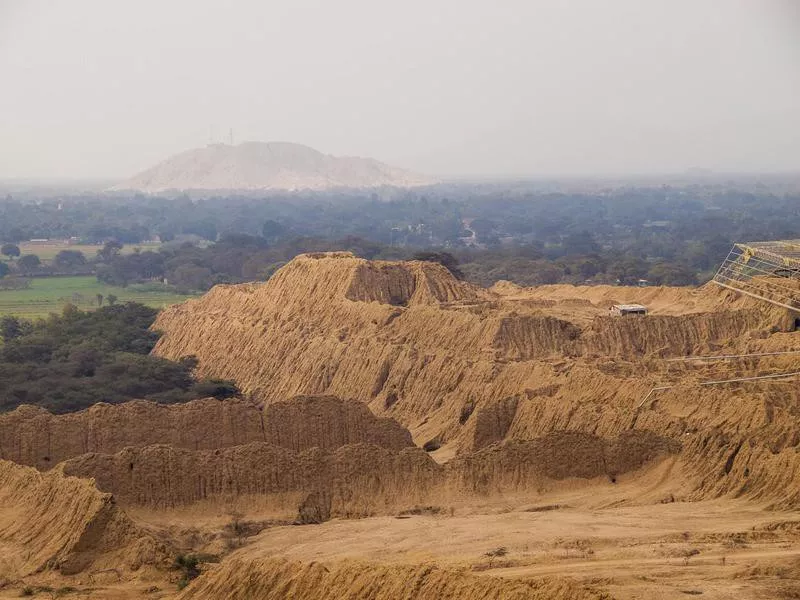
holgs / Getty Images
Location: Peru
Dates back to: 1000 A.D.
What Makes This Pyramid Cool?
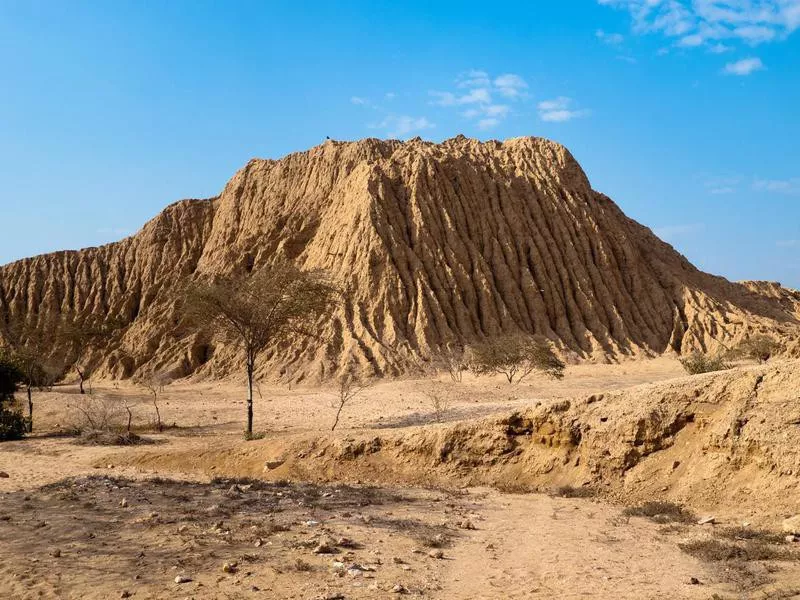
holgs / Getty Images
One of Peru's pre-Columbian sites, Tucume sits south of the La Leche River near La Raya Mountain. The 540-acre site is home to 26 different pyramids and mounds.
Archaeologists believe that it was a thriving regional center and could have been the capital for the Lambayeque people, as well as the Chimu people and Inca. Outside of Tucume, within the Lambayeque region, are an additional 200-plus, mud-brick pyramids all throughout the valley.
21. Prang Temple
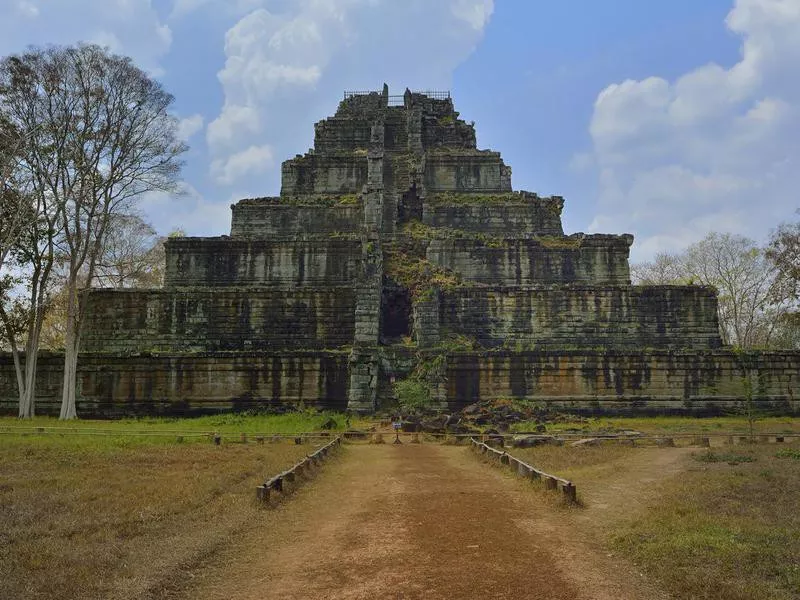
LUCKOHNEN / Getty Images
Location: Koh Ker, Cambodia
Dates back to: 940 A.D.
What Makes This Pyramid Cool?
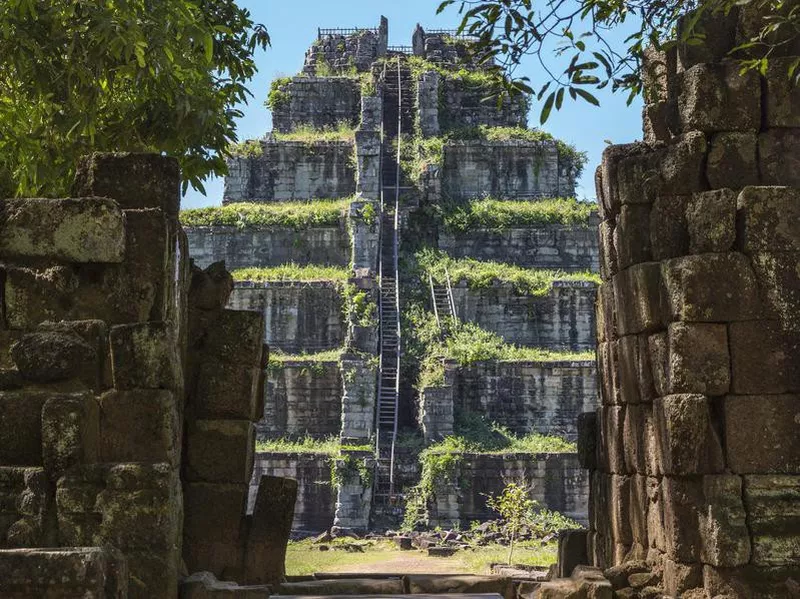
AG-ChapelHill / Getty Images
Once the ancient capital of Cambodia, the most preserved remnant of Koh Ker is the Prang temple, a seven-tiered pyramid that stands at 118-feet high. The temple was built by King Jayavaraman IV and faces west toward Angkor.
The pyramid was constructed as a place of worship for Treypuvanesvara, the god of happiness. Other temples can be found in Koh Ker, though many are no longer standing.
20. Angkor Wat
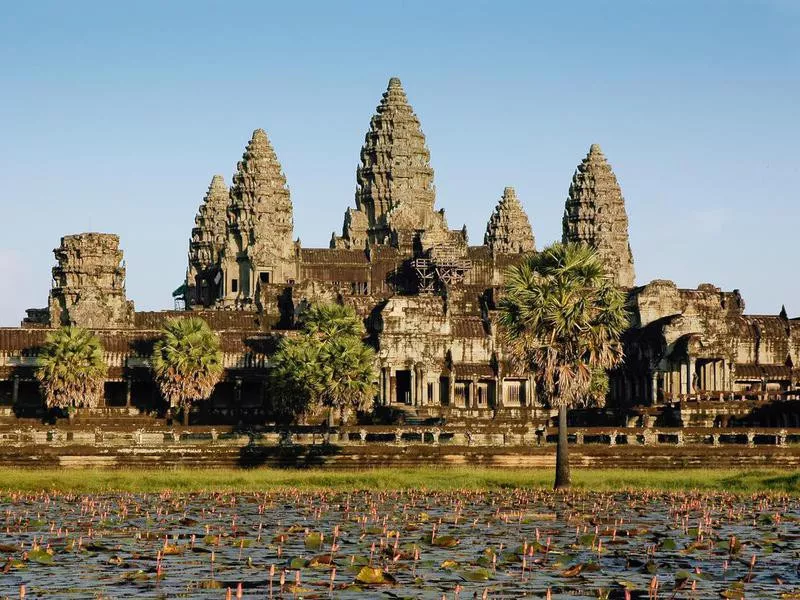
hippostudio / Getty Images
Location: Siem Reap, Cambodia
Dates back to: 900 to 1000 A.D.
What Makes This Pyramid Cool?
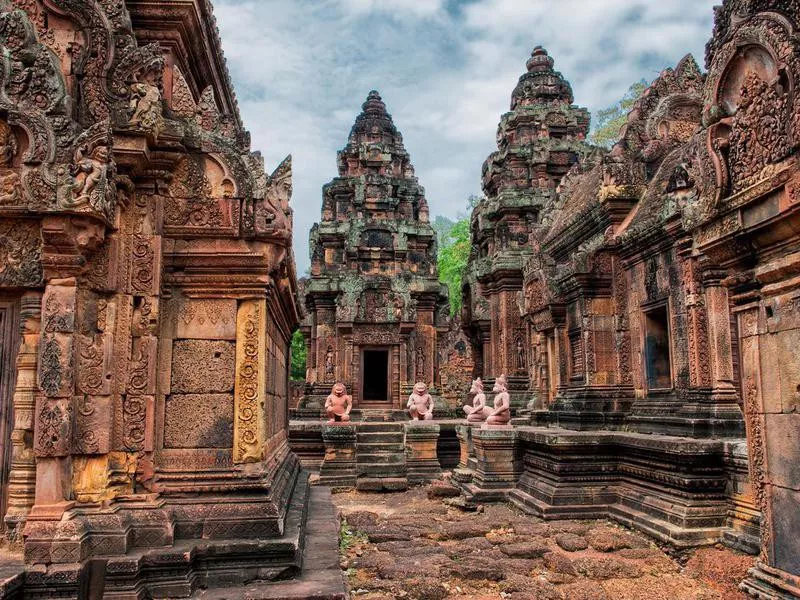
Rolf_52 / Getty Images
The ancient Khmer empire in Siem Reap, Cambodia, is one of the largest tourist attractions in the world. The ornate, mind-boggling archaeological site brings thousands of tourists every year to marvel at the lost city that rises out of the jungle.
Within the temple complex are several step pyramids, like the Phnom Baking temple and the Baksei Chamkrong temple. The entire complex has been a UNESCO World Heritage site since the early 1990s.
19. Borobudur Temple
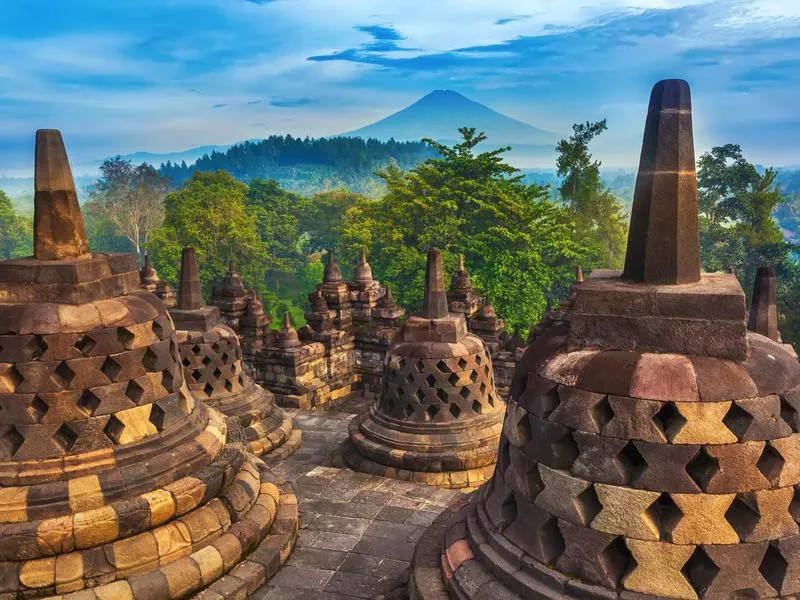
Valery Bocman / Getty Images
Location: Java, Indonesia
Dates back to: 800 A.D.
What Makes This Pyramid Cool?
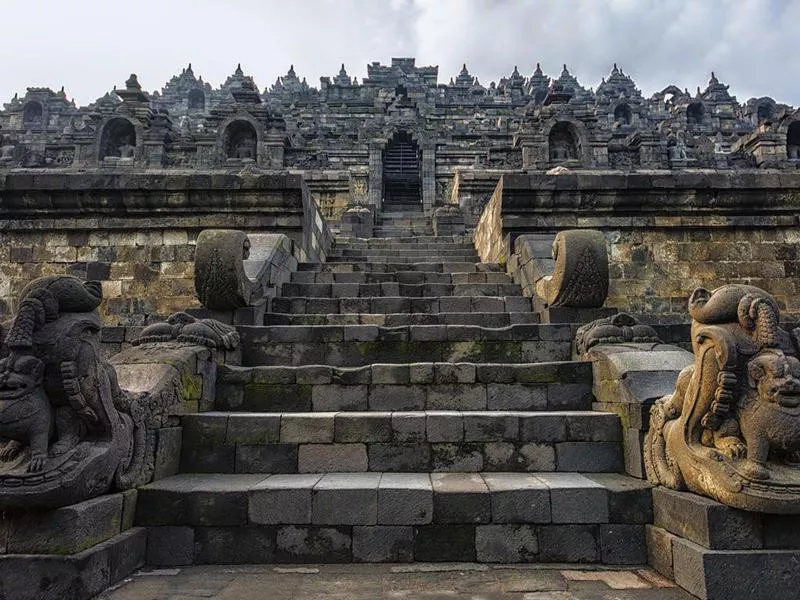
StockByM / Getty Images
One of the largest Buddhist temples in the world, Borobudur Temple dates back to the Sailendra Dynasty and reflects typical Javanese Buddhist architecture. The temple was only in use for about a century and was not discovered until the 19th century.
Today, it takes travelers back in time through its open-air passageways and walkways that wind all the way up to the top. Within the temple are more than 500 statues of Buddha as well.
18. Chichen Itza
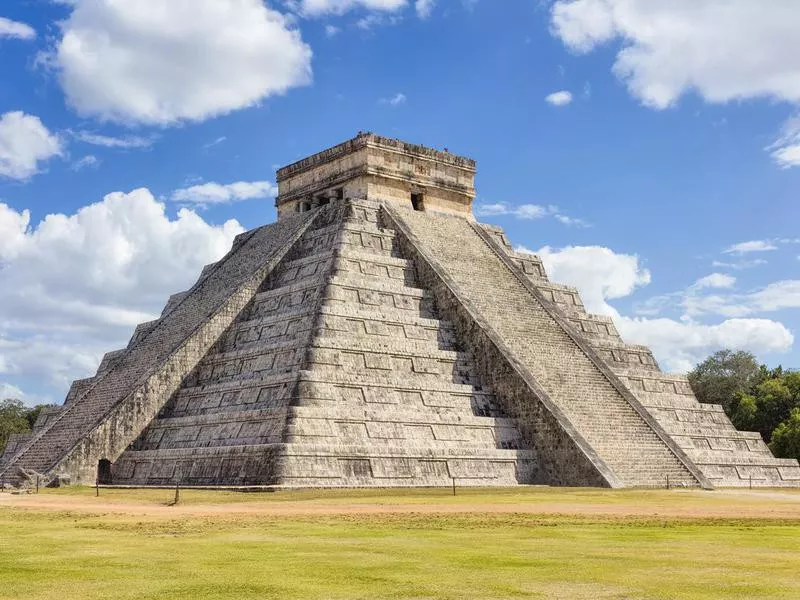
cinoby / Getty Images
Location: Yucatan Peninsula, Mexico
Dates back to: 750 to 900 A.D.
What Makes This Pyramid Cool?
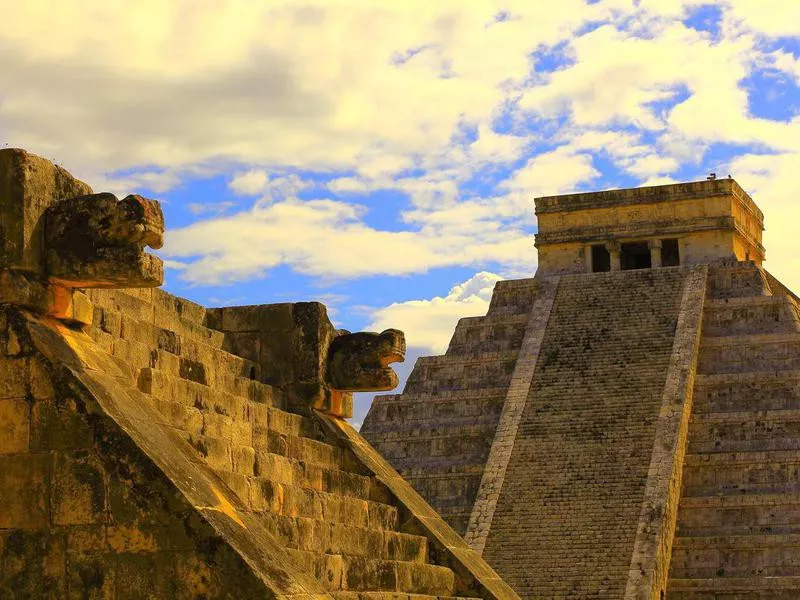
agustavop / Getty Images
Southern Mexico is littered with relics from the ancient Mayan kingdoms, but none is more famous than Chichen Itza. This massive complex sits not far from the city of Valladolid in the state of Yucatan. The city was constructed by two of Mexico's indigenous tribes — the Mayas and the Toltecs.
Today, many buildings survive, making it one of the best glimpses into the ancient Mexican world. The UNESCO Heritage Site's crown jewel is El Castillo, the main pyramid temple, which is one of the top places in the world to celebrate the spring and winter equinoxes.
17. Temple of Inscriptions
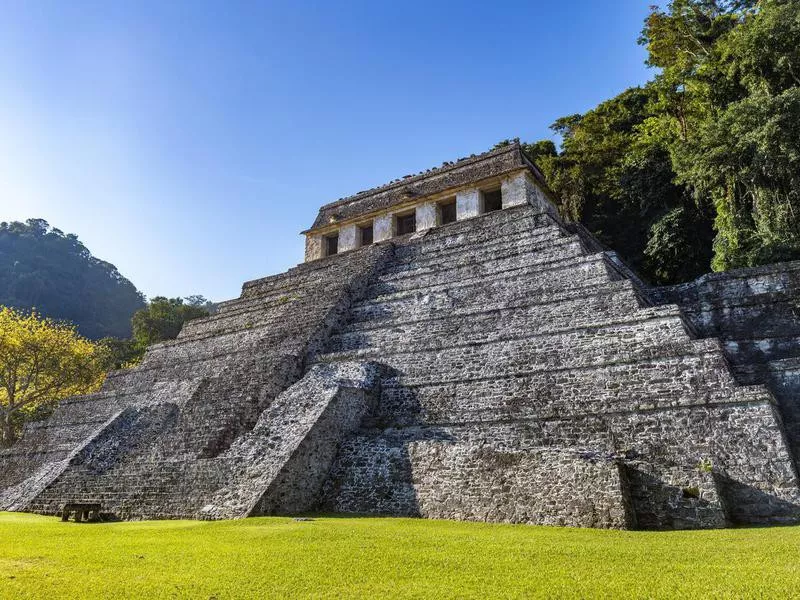
SL_Photography / Getty Images
Location: Palenque, Mexico
Dates back to: 600 A.D.
What Makes This Pyramid Cool?
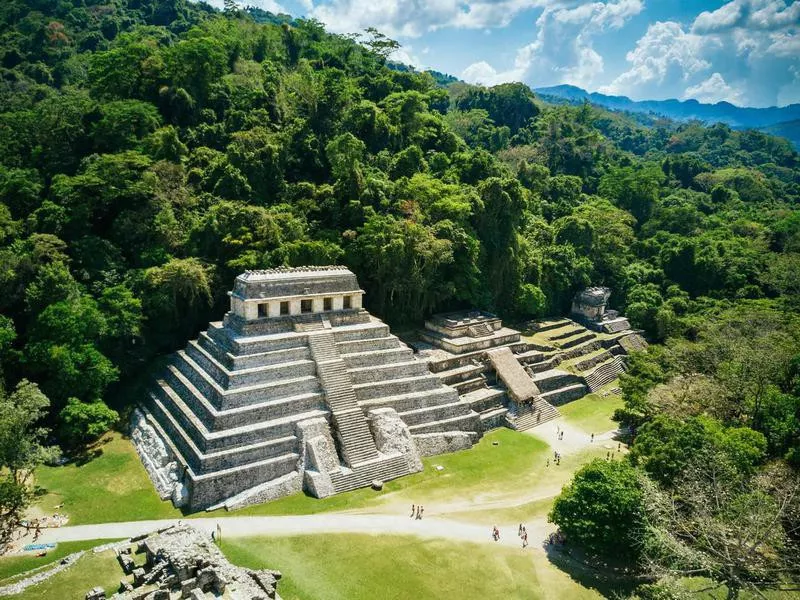
ferrantraite / Getty Images
One of Mexico’s lesser-known (but no less impressive) archaeological sites sits in the lowland jungle in the state of Chiapas. Known as Palenque, the ancient Mayan city was one of the greatest of its time, and it contains one of the largest Mesoamerican stepped pyramids.
The Temple of Inscriptions was built as the tomb for K'inich Janaab Pakal, which was the ruler of Palenque during the 7th century. The Temple of Inscriptions is named as such thanks to the hieroglyphics carved on the side, which have been integral to the study of the Ancient Maya language and culture.
16. Tomb of the General
Location: Ji’an, China
Dates back to: 400 A.D.
What Makes This Pyramid Cool?
The Tomb of the General was constructed to be the burial place of King Jangsu, who was the 20th ruler of one of the Three Kingdoms of Korea, which stretched from Mongolia to Chungju. Today, the temple sits in modern-day China and is known as the Pyramid of the East.
Standing at 43 feet and made up of 1,100 stone blocks, it is believed to be the burial site of King Gwanggaeto or his son, King Jangsu.
15. La Quemada Votive Pyramid
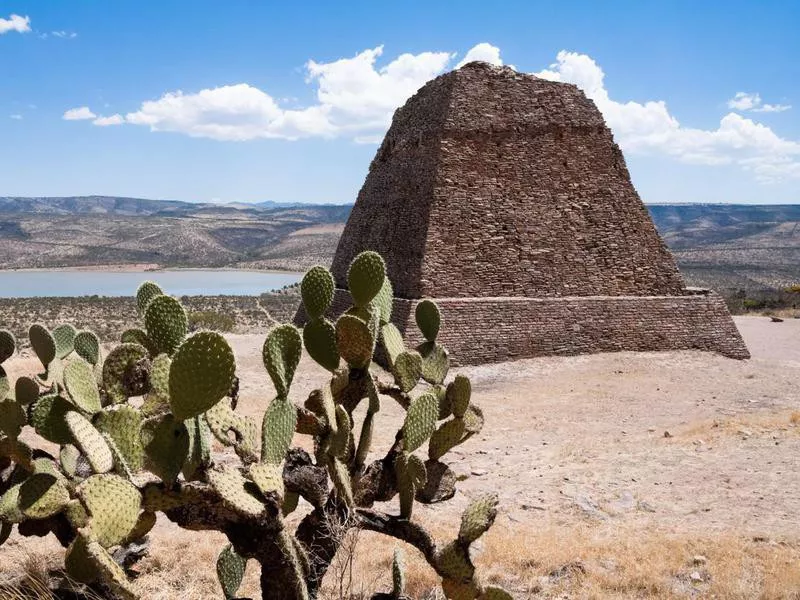
AlbertoLoyo
Location: Zacatecas, Mexico
Dates back to: 300 A.D.
What Makes This Pyramid Cool?
Mexico and Central America are strewn with thousands of Mesoamerican complexes. Mexico, in particular, has several hundred all its own. La Quemada is one of them, composed of many stone platforms that may have been a variety of things, from a trading post to a fortress to a religious site. Archaeologists are still not entirely sure.
But at the southern end of the complex is a large cluster of what look to be religious constructions, the most imposing of which is an altar pyramid also known as the Votive Pyramid.
14. Tikal
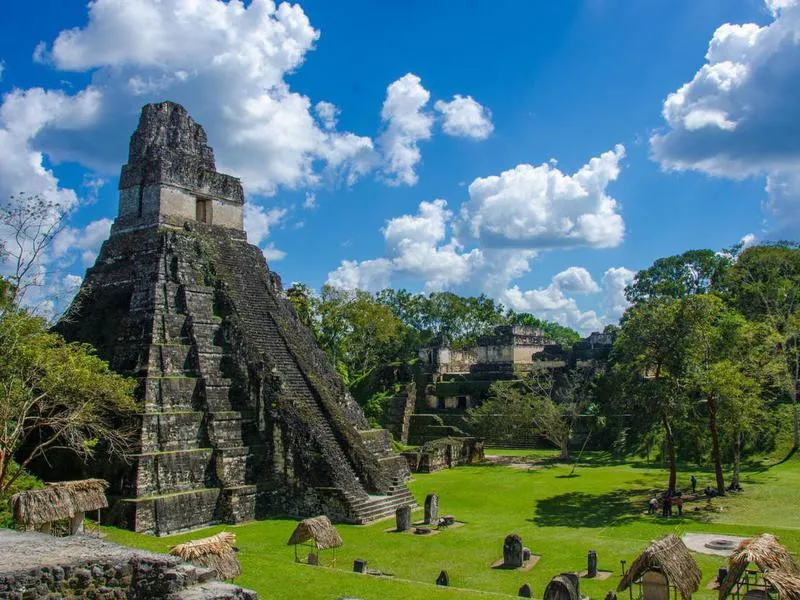
SimonDannhauer / Getty Images
Location: Peten, Guatemala
Dates back to: 200 A.D.
What Makes This Pyramid Cool?
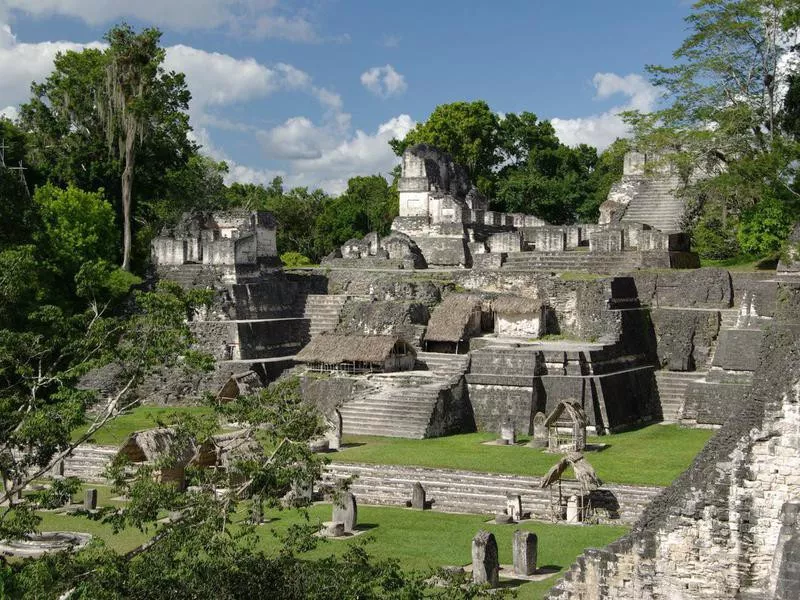
pascalou95 / Getty Images
Perhaps one of the most beautifully preserved cities from the Mayan culture, Tikal is recognized around the world for its Tikal IV temple, which maxes out at 230-feet high. It is topped by the Temple of the Two-Headed Serpent. Five other pyramid temples exist in the complex as well.
The site was recognized by UNESCO in the 1970s. Today, the main buildings are within a square mile of one another, and the ruins are the largest attraction within the Tikal National Park.
13. Pyramid of Cestius
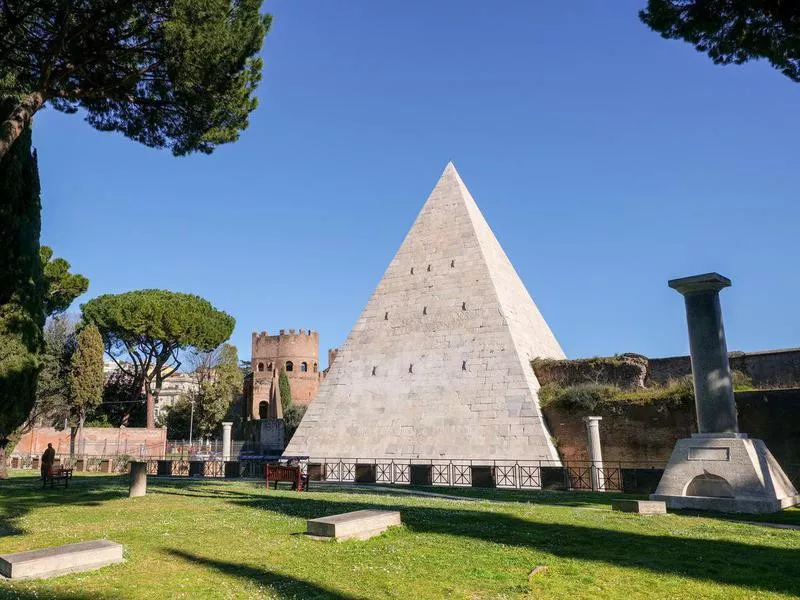
Photo Beto / Getty Images
Location: Rome, Italy
Dates back to: 12 B.C.
What Makes This Pyramid Cool?
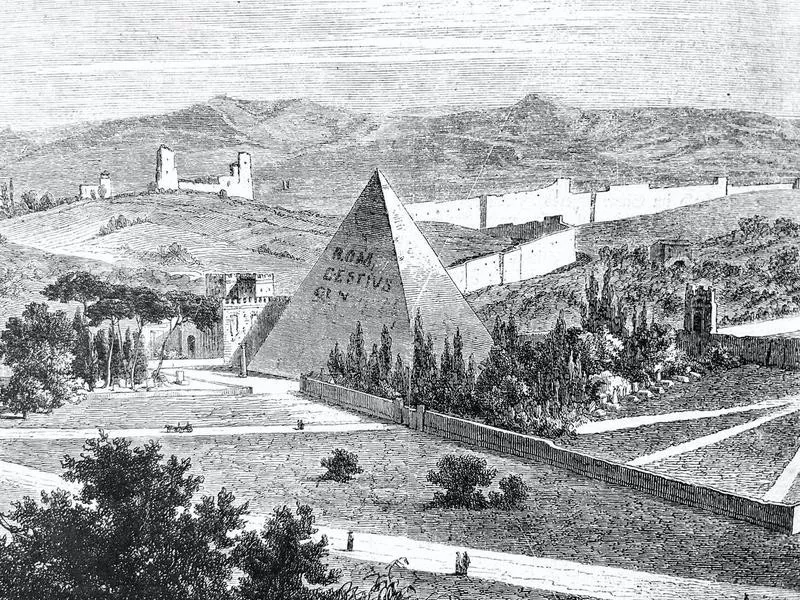
clu / Getty Images
When you think of pyramids, you may not necessarily think of Ancient Rome, but it turns out the slate roads of the Roman Empire were home to a pyramid or two. The Pyramid of Cestius is an ancient pyramid located near Porta San Paolo.
In fact, it marks the split of two ancient roads — Via Ostiensis and a road that stretched to the Tiber River. The pyramid was built as a tomb for Gaius Cestius, covered in white marble, and measures 100 feet by 125 feet.
12. Great Pyramid of Cholula
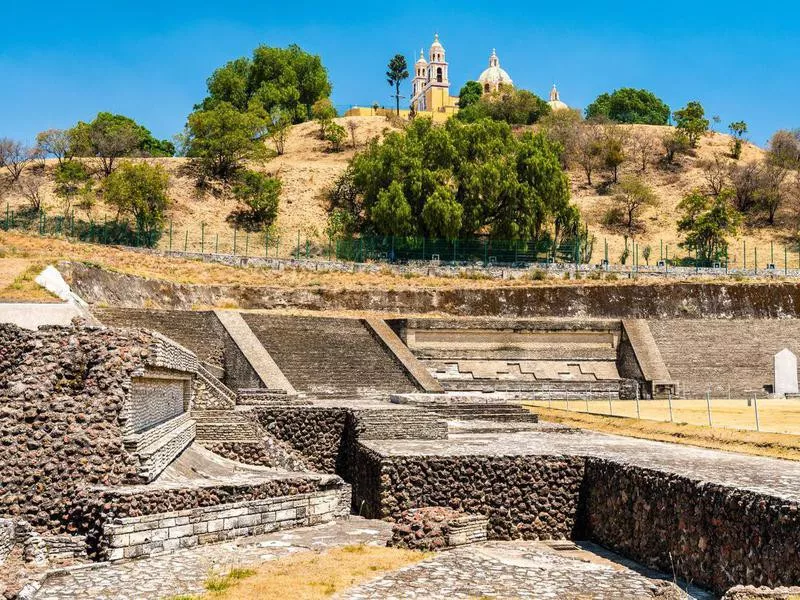
Leonid Andronov / Getty Images
Location: Cholula, Mexico
Dates back to: 300 B.C.
What Makes This Pyramid Cool?

Nastasic / Getty Images
The Great Pyramid of Cholula is actually part of a massive temple complex, located in the mountains near Puebla, Mexico. Believe it or not, it is the largest archaeological site of a pyramid in the New World. The pyramid stands 180 feet and measures 1,310 feet by 1,130 feet.
The complex was started in the 3rd century B.C. and was built in four stages until the 9th century A.D. It was dedicated to the Aztec god, Quetzalcoatl.
11. Teotihuacan
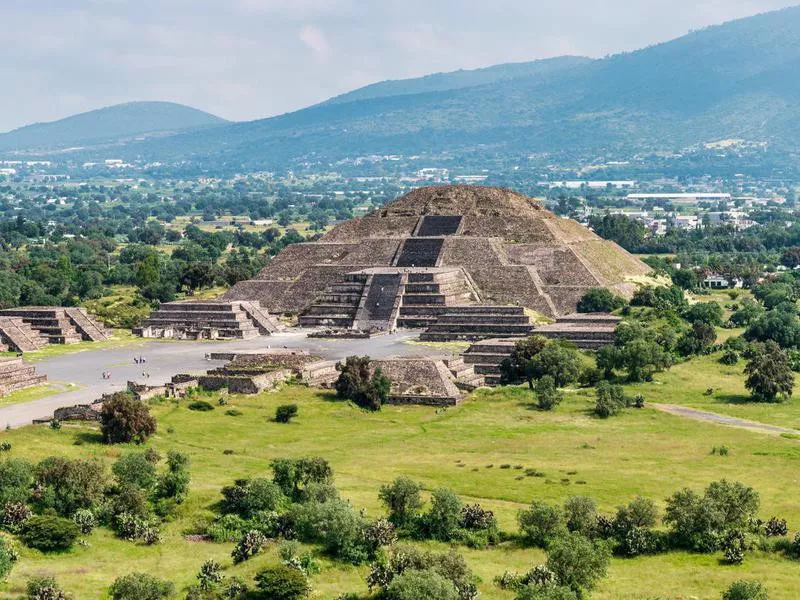
Starcevic / Getty Images
Location: Mexico City, Mexico
Dates back to: 400 B.C.
What Makes This Pyramid Cool?
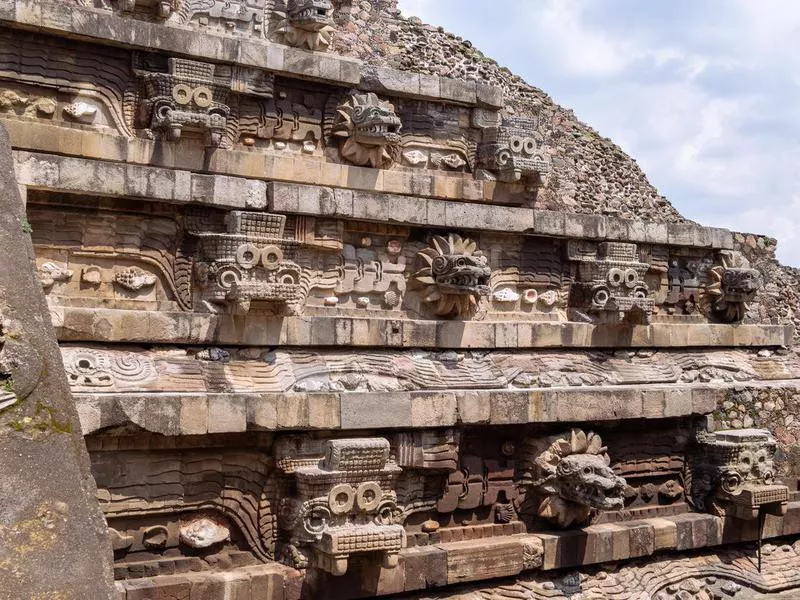
Ivan Malagon Fernandez / Getty Images
Mexico City may be a thoroughly modern city, but its roots can be traced back thousands of years. Evidence of this is just outside the city in the ancient Aztec site of Teotihuacan. Here, the Pyramid of the Sun is one of the largest and most impressive pyramids in the world.
The city was built around 400 B.C. and is known for its many stepped pyramids, the most impressive of which is the massive Pyramid of the Sun. Today, the site is recognized by UNESCO, and visitors to the ancient city will get a real glimpse into what was like during the reign of the Aztecs.
10. Monte Alban
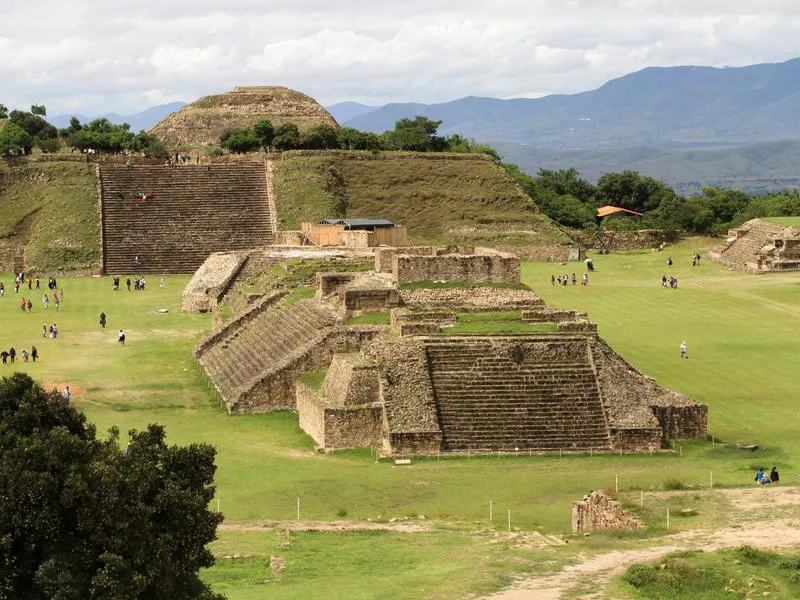
arturogi / Getty Images
Location: Oaxaca, Mexico
Dates back to: 500 B.C.
What Makes This Pyramid Cool?
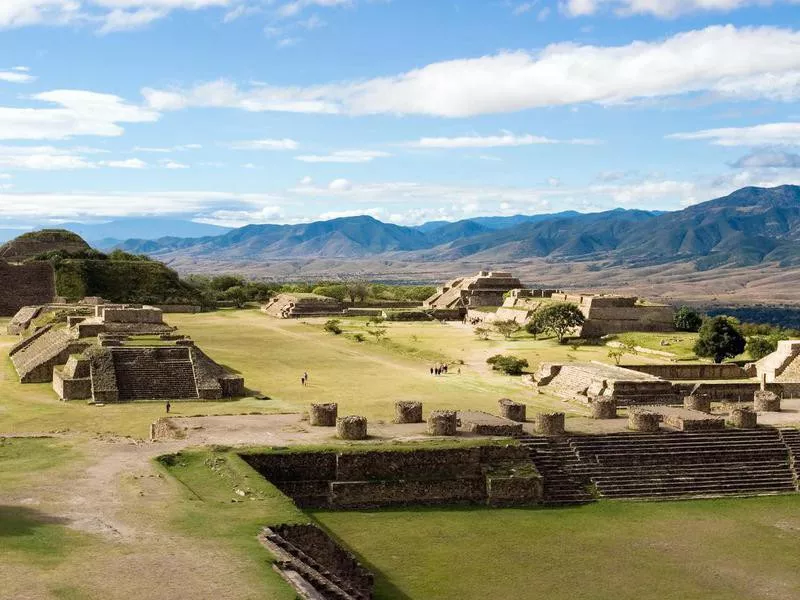
Angelika / Getty Images
One of the earliest cities of Mesoamerica, Monte Alban sits perched high on a plateau overlooking what is now the city of Oaxaca, Mexico. The UNESCO World Heritage Site is home to numbers of pyramids that were mostly built by the Zapotecs.
Still, the city itself saw many different civilizations, including the Olmecs and the Mixtecs. Across the plateau, visitors will find terraces, pyramids, palaces, tombs and even a ball court.
9. Tomb of Kashta
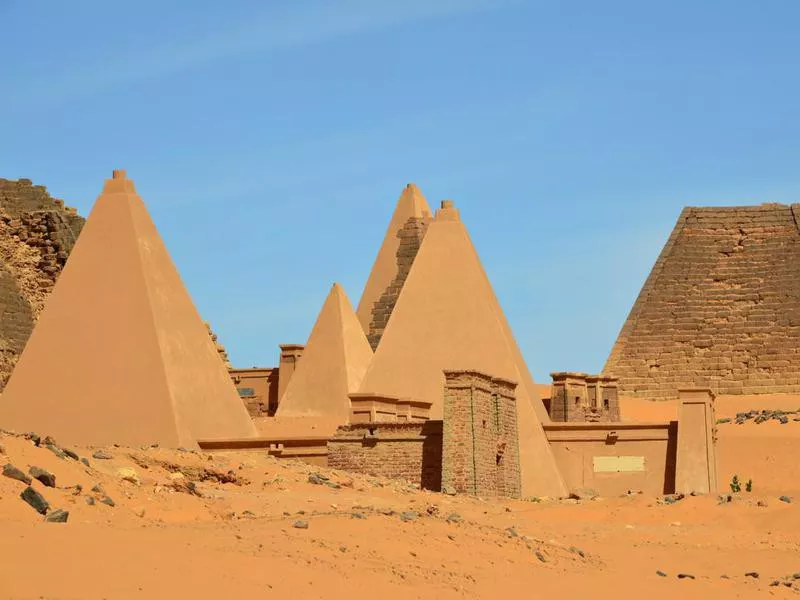
mtcurado / Getty Images
Location: Meroe, Sudan
Dates back to: 750 to 650 B.C.
What Makes This Pyramid Cool?
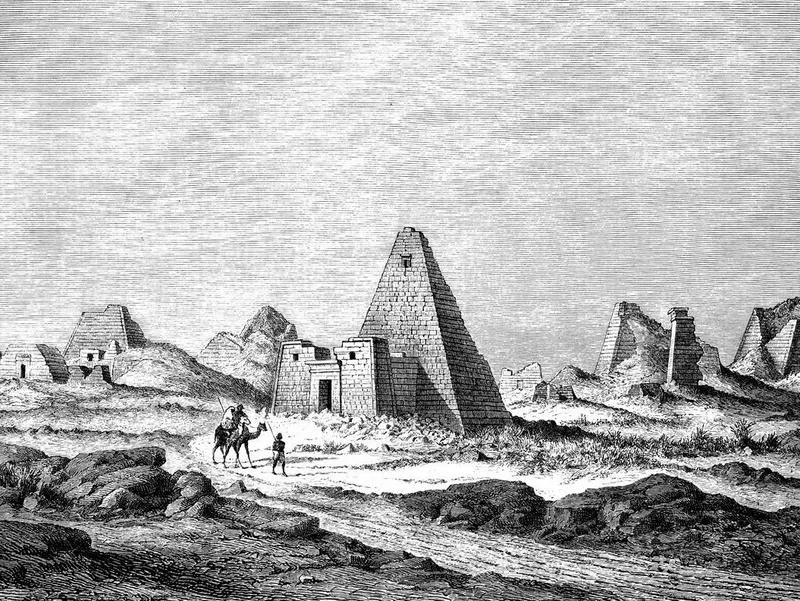
Nastasic / Getty Images
Today, the country of Sudan sits on what was formerly known as Nubia — one of the great societies of the early African continent. What remains are stunning archaeology relics, like the Nubian pyramids found at Meroe.
There are a total of 40 of these small, narrowly-shaped pyramids, which clearly have been influenced by the Egyptian architecture. Still, there are many more existing Nubian pyramids in Africa than there are Egyptian ones.
8. Chavin de Huantar
Location: Ancash Region, Peru
Dates back to: 900 B.C.
What Makes This Pyramid Cool?
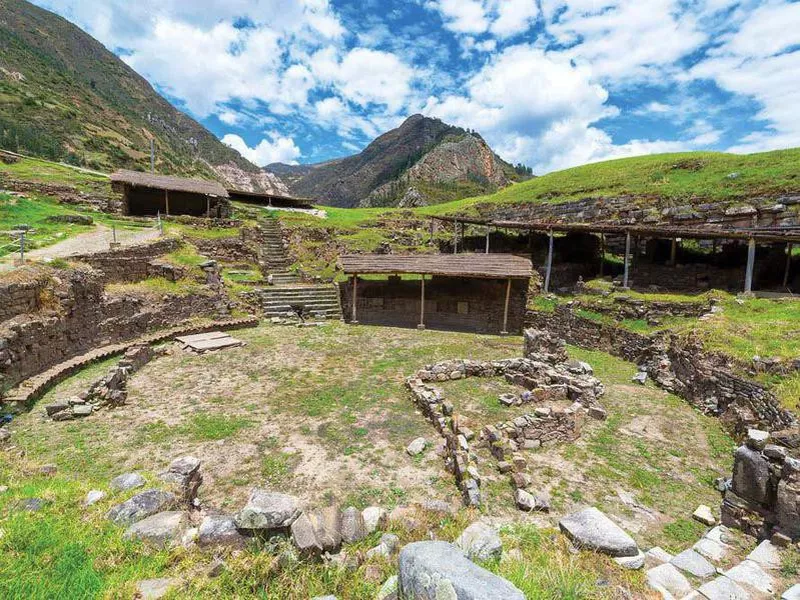
Jess Kraft / Britannica
Often overshadowed by the masterpiece that is Machu Picchu, Chavin de Huantar is yet another indigenous construct from pre-Columbian Peru. The massive complex nestled in the highlands includes both an old and "new" temple, which were constructed from stone blocks and resemble pyramids with flat tops.
The temples date back to the Chavin people and were said to have been in use between 900 and 200 B.C. Today the constructions are mostly rubble, but at one point, it was considered to be a city built by the gods.
7. Chogha Zanbil
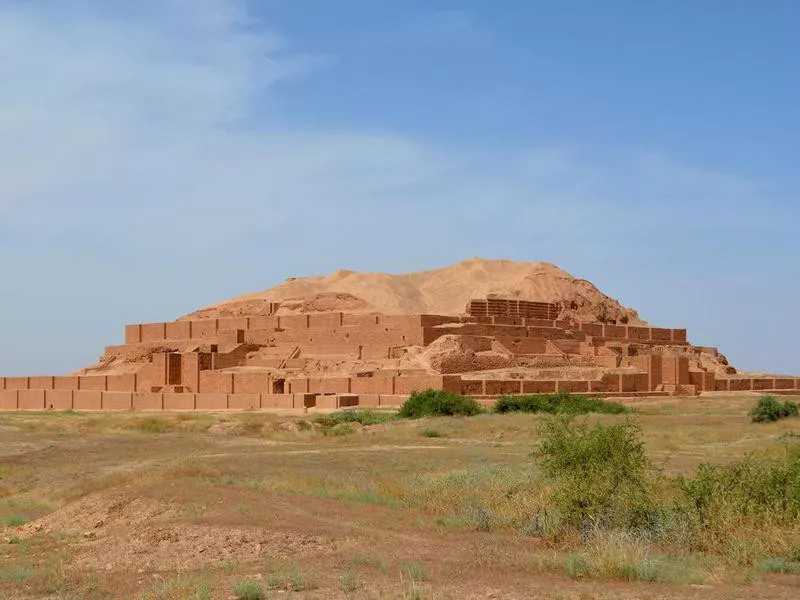
ivanadb / Getty Images
Location: Khuzestan Province, Iran
Dates back to: 1250 B.C.
What Makes This Pyramid Cool?
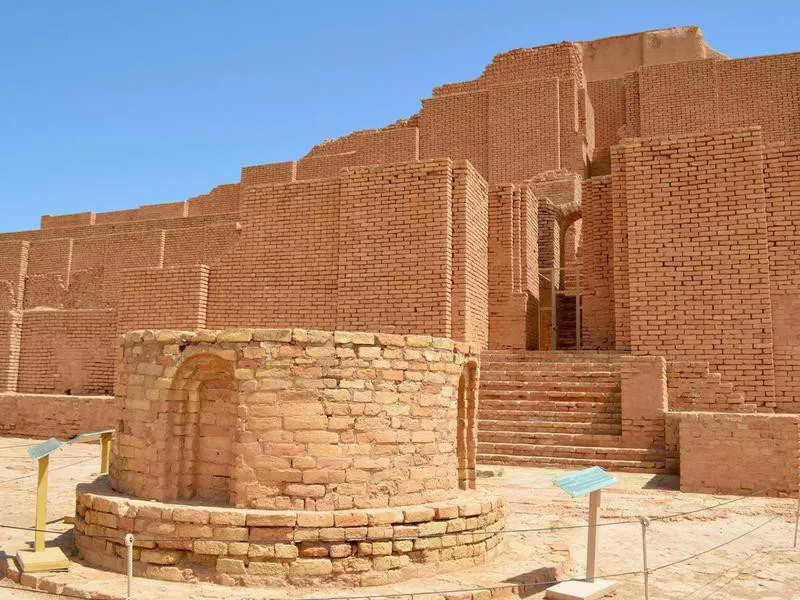
ivanadb / Getty Images
There aren't too many ziggurats that have served from ancient Mesopotamian times. But Chogha Zanbil is definitely one of them. A structure from the Elamite complex in Iran, it is protected by three concentric walls, which are thought to have been the boundaries of the town that lived around the ziggurat.
The pyramid itself was built as a shrine dedicated to the god Inshushinak. It originally measured 345 feet on each side and at 174-feet tall. Today, it is only 81.2-feet high but still remains remarkably preserved.
6. Pyramids of Argolis
Location: Argolid, Greece
Dates back to: 2000 B.C.
What Makes This Pyramid Cool?
Greece may be home to iconic ruins like those atop the Acropolis, but it also has a few pyramids to show off. In southern Greece sit the Pyramids of Argolis, the most famous of which is the Pyramid of Hellinikon.
Argos was said to be the oldest continuously inhabited community in Greece, but archaeologists can't seem to pinpoint the exact date the structures were built. The Pyramid of Hellinikon sticks up from a low hill, and from its top, it would have been possible to see views across the Argolid Plain to the port of Nafplion and the Aegean Sea.
5. Ziggurat of Ur
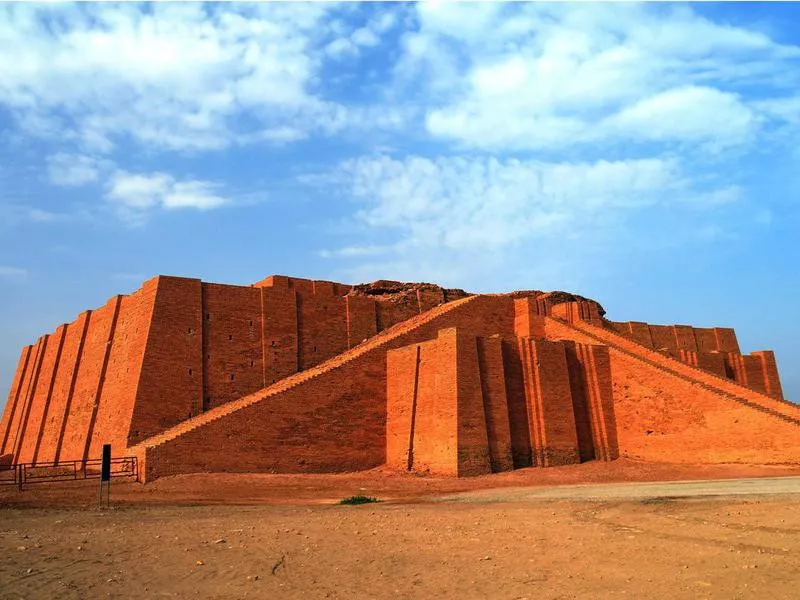
HomoCosmicos / Getty Images
Location: Iraq
Dates back to: 2050 to 1980 B.C.
What Makes This Pyramid Cool?
If you can think back to your middle school Social Studies classes, you'll likely remember learning about the ancient civilizations in and around Mesopotamia, or what is now modern-day Iraq. Its inhabitants were known as the Sumerians, and their most famous structure is the ancient Ziggurat of Ur.
The most well-preserved monument from the Sumerians, the Ziggurat, was built by King Shulgi and later reconstructed by King Nebuchadnezzar II. It was thought that the Ziggurat would be where the citizens of Ur would bring their surplus farming bounty.
4. Giza
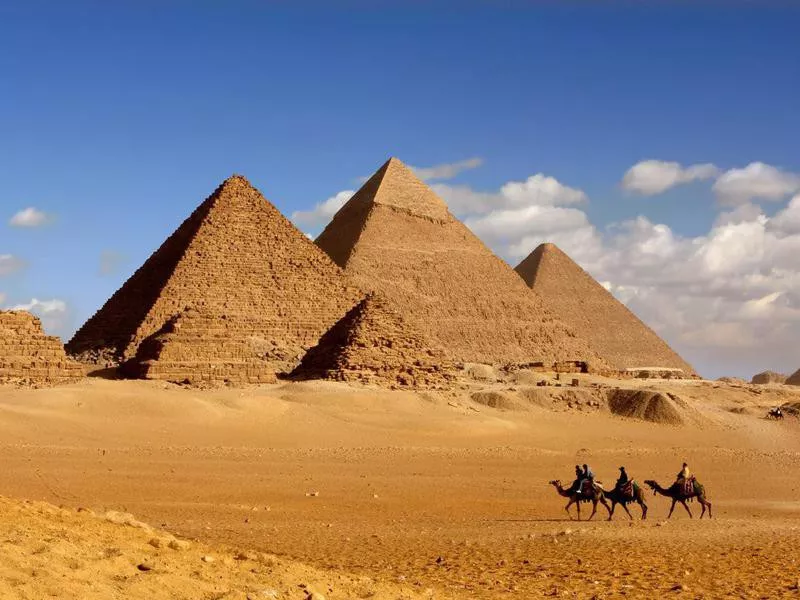
sculpies / Getty Images
Location: Cairo, Egypt
Dates back to: 2580 to 2560 B.C.
What Makes This Pyramid Cool?
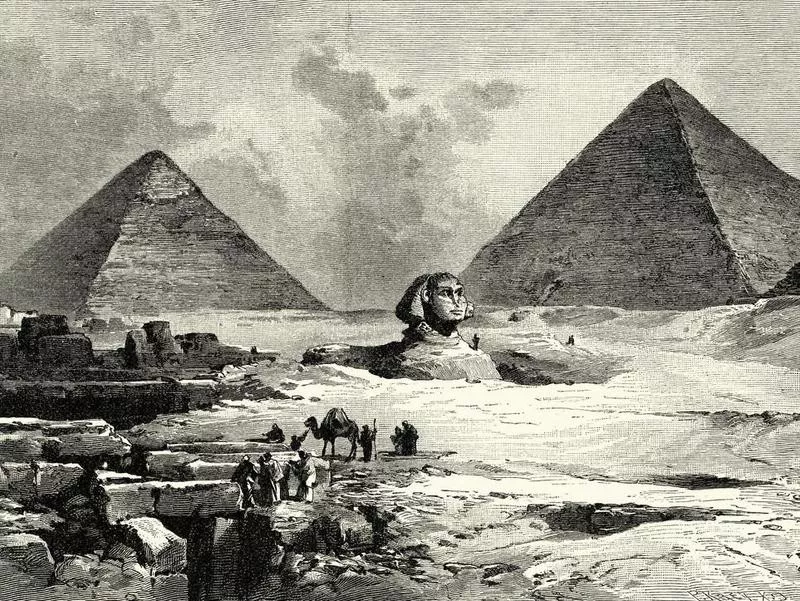
duncan1890 / Getty Images
No doubt when you hear the world “pyramid,” it's the Great Pyramid of Giza that likely pops into your mind. This is the most famous temple in the world, alongside its neighboring temples and the statue of the Sphinx. The pyramid belongs to the second king of the Fourth Dynasty, Khufu.
It was once the tallest structure in the world and remained that way for nearly 4,000 years. Today, it is the oldest of the Seven Wonders of the Ancient World and the only one that is most intact. It is estimated that the Great Pyramid was built with 2.3 million blocks of stone.
3. Bent Pyramid
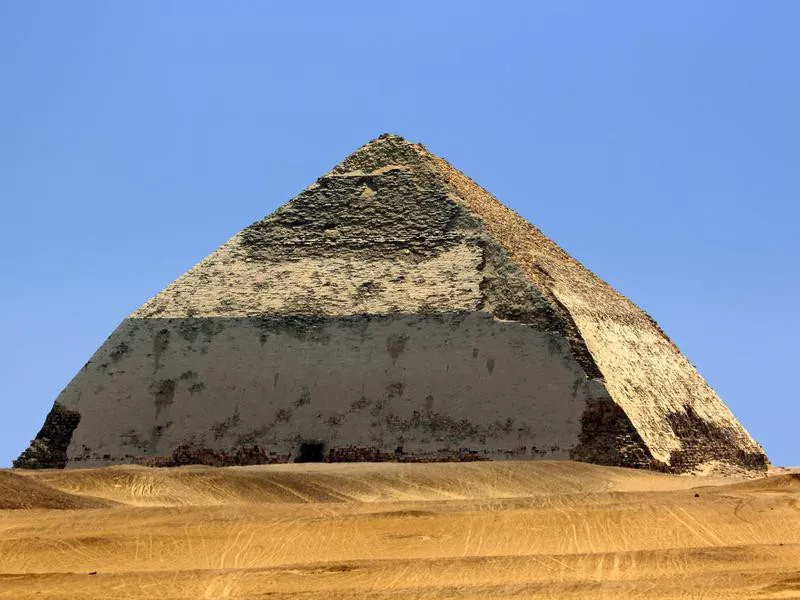
WitR / Getty Images
Location: Dahshur, Egypt
Dates back to: 2601 B.C.
What Makes This Pyramid Cool?
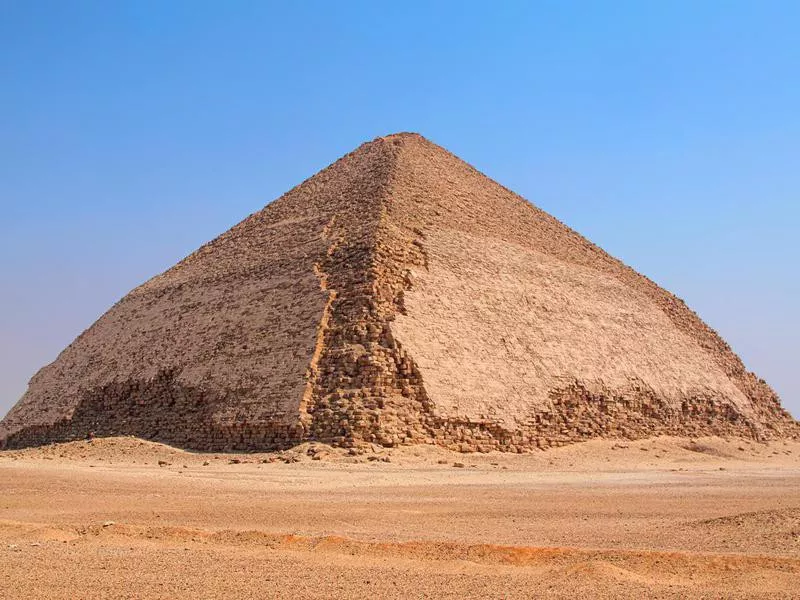
Magzmichel / Getty Images
Once upon a time, the city of Dahshur was home to 11 pyramids. While few of those have made it to modern times, Dahshur remains one of the best spots in the world to view ancient Egyptian pyramids — especially if you'd like to skip the crowds at Giza.
The Bent Pyramid is one of the remaining structures, built by Sneferu, the father of Khufu, for whom the Great Pyramid at Giza stands. Archaeologists believe the Bent Pyramid is one of the early examples of the transition from step pyramid to smooth-sided pyramids.
2. Pyramid of Djoser
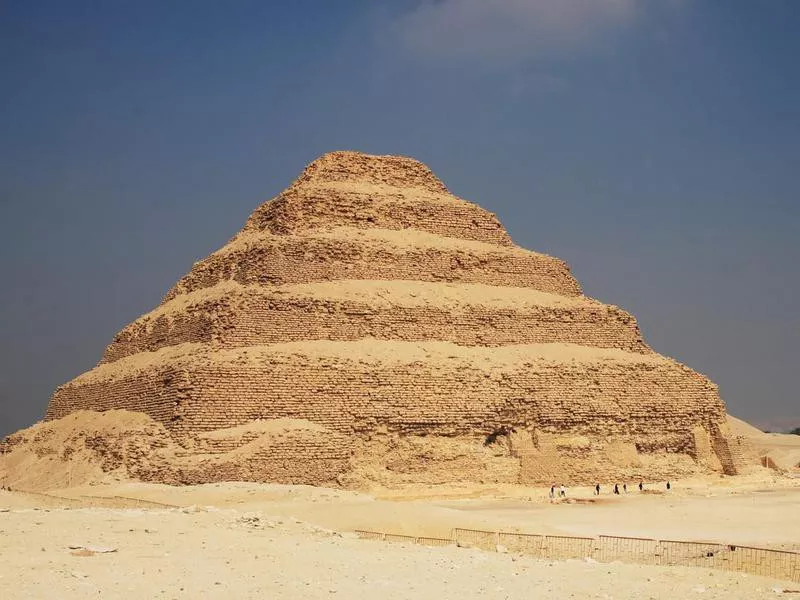
Foxie_aka_Ashes / Getty Images
Location: Saqqara, Egypt
Dates back to: 2670 to 2650 B.C.
What Makes This Pyramid Cool?
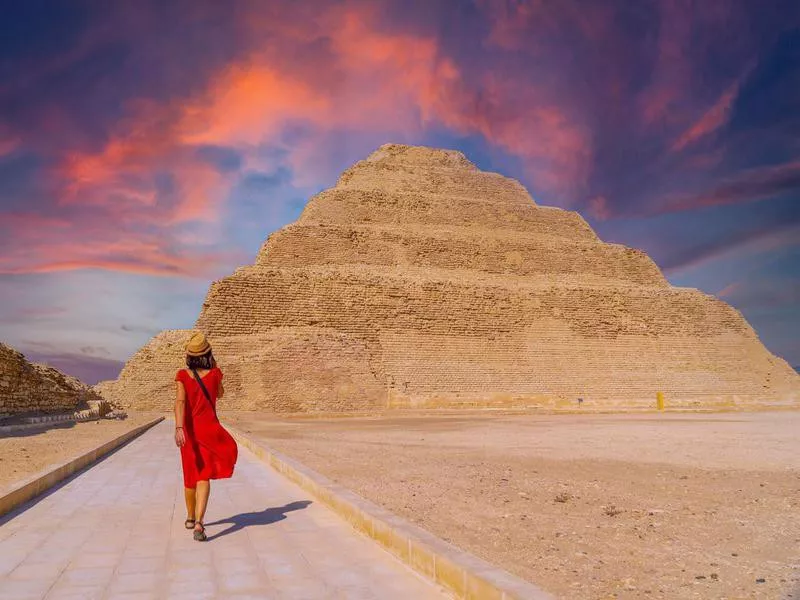
Unaihuiziphotography / Getty Images
The ancient city of Saqqara served as the burial ground for the ancient Egpytian city of Memphis. As such, it is peppered with pyramids and tombs, the most impressive of which is the Pyramid of Djoser.
This step pyramid was built before the ones at Giza more than 100 years earlier. In fact, it may have been the world's first step pyramid. It was built as the tomb for the first king of Egypt's Third Dynasty.
1. Monte d’Accoddi
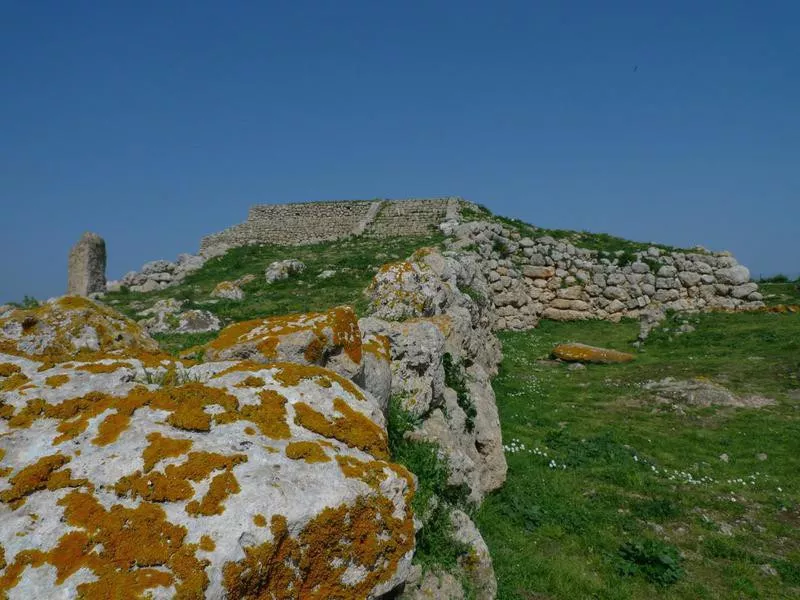
ezioman / Getty Images
Location: Sardinia, Italy
Dates back to: 4000 B.C.
What Makes This Pyramid Cool?
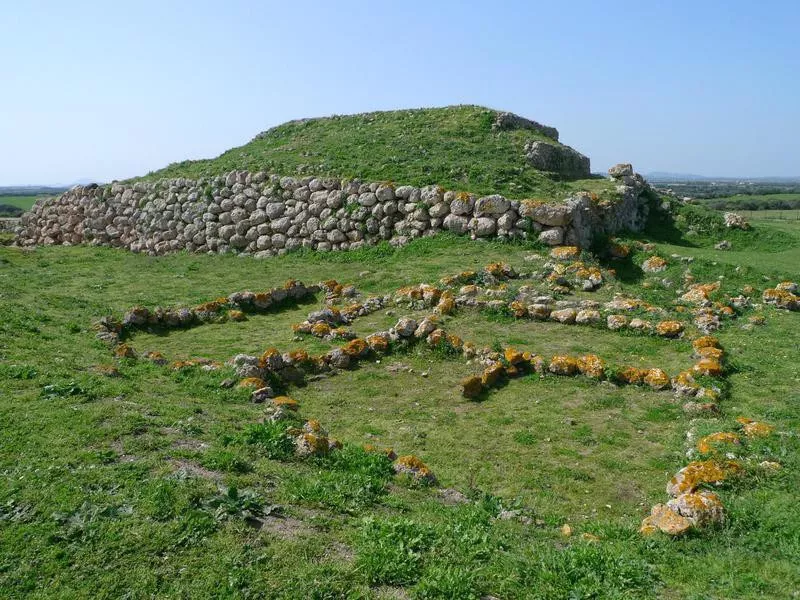
ezioman / Getty Images
On the island of Sardinia sits Monte d'Accoddi, an ancient structure that was built by the Ozieri culture, dating back to Neolithic time. What remains is a massive stone platform that archaeologists believe to have been an altar. Evidence suggests the structure was abandoned around 3000 B.C.
After the Ozieri group abandoned the site, it is thought that the original structure was covered with dirt and stones to create a step pyramid. It’s also believed to be the earliest known sacrificial site in Western Europe.

